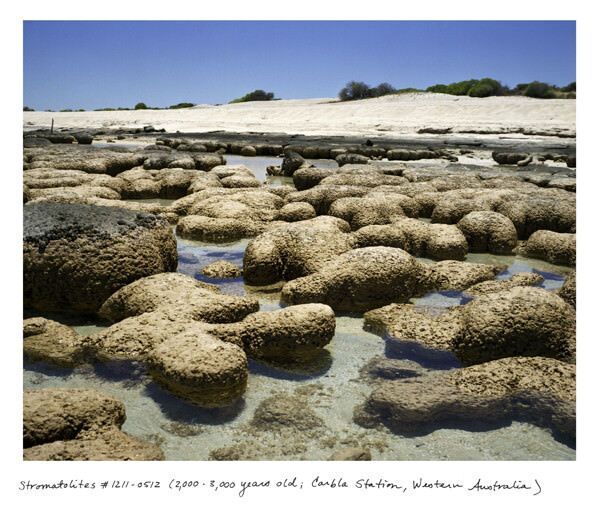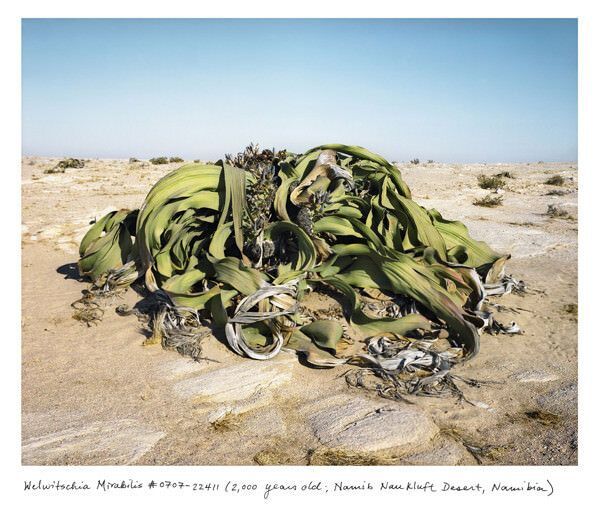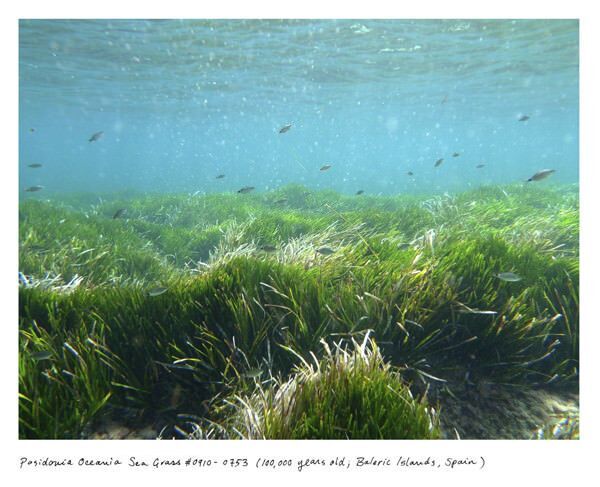For nearly a decade, photographer Rachel Sussman has been traveling the globe in search of the world's oldest living things. From the Mojave Desert to the Australian Outback to Greenland's icy expanses, she captures portraits of life forms so relentless they've managed to survive eons of planetary change. An 80,000-year-old colony of aspen trees in Utah and a 43,600-year-old self-propagating shrub in Tasmania rank amongst Sussman's unlikely subjects, just two of the many plants, fungi and invertebrates catalogued by her lens.
Gathered together in a book published this Spring, and aptly titled "The Oldest Living Things in the World," the collection of age-old organisms serves as a stunning visual history of Earth's extreme inhabitants. The collision of art and science is hardly just a visual feast of the past, it's also a reminder of what the future might leave behind, as climate change and human endeavors threaten the existence of these millennia-old characters.
Sussman worked with biologists to complete the research for the project (not to mention science writer Carl Zimmer has provided the foreword and Hans Ulrich Obrist the essays for the new tome), and the photographer has worked tirelessly to bring awareness to the fragile nature of stromatolites, moss and other overlooked living things. Her 2010 TedTalk educated the world on 2,000-year-old brain coral off the coast of Tobago, while an article posted to Brain Pickings lamented the death of a 3,500 year old Cypress tree.
Check out a preview of "The Oldest Living Things in the World," published by the University of Chicago Press, below. Let us know your thoughts on the ancient individuals in the comments. Behold, 11 of the world's oldest organisms:
-
1. La Llareta: 2,000+ years old (Atacama Desert, Chile)
"What looks like moss covering rocks is actually a very dense, flowering shrub that happens to be a relative of parsley, living in the extremely high elevations of the Atacama Desert."
-
2. Pafuri Baobab: Up to 2,000 years old (Kruger National Park, South Africa)
"This baobab lives in the Kruger Game Preserve in South Africa and requires an armed escort to visit. Baobabs get pulpy at their centers and tend to hollow out as they grow older. These hollows can serve as natural shelters for animals, but have also been appropriated for some less scrupulous human uses: for instance, as a toilet, a prison, and a bar."
-
3. Spruce Gran Picea: 9,550 years old (Fulufjället, Sweden)
"This 9,950-year-old tree is like a portrait of climate change. The mass of branches near the ground grew the same way for roughly 9,500 years, but the new, spindly trunk in the center is only 50 or so years old, caused by warming at the top of this mountain plateau in Western Sweden."
-
4. Mojave Yucca: 12,000 years old (Mojave Desert, California)
"The approximately 12,000-year-old creosote bush and Mojave yucca both have remarkable circular structures, pushing slowly outward from a central originating stem. New stems replace old ones, but they are all connected by the same clonal root structure."
-
5. Stromatolites: 2,000-3,000 years old (Carbla Station, Western Australia)
"Straddling the biologic and the geologic, stromatolites are organisms that are tied to the oxygenation of the planet 3.5 billion years ago, and the beginnings of all life on Earth."
-
6. Huon Pine: 10,500 years old (Mount Read, Tasmania)
"Fire destroyed much of this clonal colony of Huon Pines on Mount Read, Tasmania, but a substantial portion of it survived. The age of the colony was discovered by carbon dating ancient pollen found at the bottom of a nearby lakebed, which was genetically matched to the living colony."
-
7. Antarctic Moss: 5,500 years old (Elephant Island, Antarctica)
"This 5,500-year-old moss bank lives right around the corner from where the Shackleton Expedition was marooned 100 years ago on Elephant Island, Antarctica. It was a victory simply being able to locate it. These days it's easier to get to Antarctica from space."
-
8. Welwitschia Mirabilis: 2,000 years old (Namib-Naukluft Desert, Namibia)
"The Welwitschia is primitive conifer living only in parts of coastal Namibia and Angola where moisture from the sea meets the desert. Despite appearances, it only has two single leaves, which it never sheds. National plant of Namibia."
-
9. Rare Eucalyptus (species redacted for protection): 13,000 years old (New South Wales, Australia)
"This critically endangered eucalyptus is around 13,000 years old, and one of fewer than five individuals of its kind left on the planet. The species name might hint too heavily at its location, so it has been redacted."
-
10. Bristlecone Pine: Known to live to 5,000 years old (White Mountains, California)
"Bristlecone pines are the oldest unitary organisms in the world, known to surpass 5,000 years in age. In the 1960s a then-grad student cut down what would have been the oldest known tree in the world while retrieving a lost coring bit. A cross section of that tree was placed in a Nevada casino."
-
11. Posidonia Oceania Seagrass: 100,000 years old (Balearic Islands, Spain)
"At 100,000 years old, the Posidonia seagrass meadow was first taking root at the same time some of our earliest ancestors were creating the first known “art studio” in South Africa. It lives in the UNESCO-protected waterway between the islands of Ibiza and Formentera."
See article from source:
A Photographic Exploration of the Oldest Living Things in the World
< Return To List







